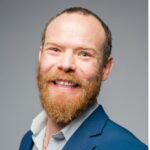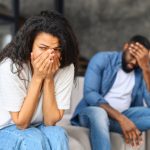Speeding Up Tendon Healing
NODE SMITH, ND
Researchers at CÚRAM, the SFI Research Centre for Medical Devices based at NUI Galway, have shown how the simple act of walking can power an implantable stimulator device to speed up treatment of musculoskeletal diseases. The results of have been published in the journal Advanced Materials.
The research establishes the engineering foundations for a new range of stimulator devices that enable control of musculoskeletal tissue regeneration to treat tendon damage and disease and sports injuries, without the use of drugs or external stimulation.
Lead researcher on the study, CÚRAM Investigator Dr Manus Biggs, said: “One of the most exciting parts of our study is that these implantable devices may be tailored to individual patients or disorders and may show promise in accelerating the repair of sport-related tendon injuries, particularly in athletes.”
The study investigated whether electrical therapy, coupled with exercise, would show promise in treating tendon disease or ruptures. It showed that tendon cell function and repair can be controlled through electrical stimulation from an implantable device which is powered by body movement.
Dr Marc Fernandez, who carried out the principal research of the study at CÚRAM, said: “Successful treatment of tendon damage and disease represents a critical medical challenge.
“Our discovery shows that an electrical charge is produced in the treatment target area — the damaged or injured tendon — when the implanted device is stretched during walking. The potential gamechanger here is like a power switch in a cell — the electrical stimulus turns on tendon-specific regenerative processes in the damaged tendon.”
The stimulator device uses a fabric like mesh — known as a piezoelectric material — that produces electricity when stretched or put under mechanical pressure. It is made using a scaffold of nano-fibres which are one-thousandth of the thickness of a human hair
Dr Fernandez added: “We presented an implantable, electrically active device capable of controlling tendon regeneration and healing. Importantly, our research improved the therapeutic performance of the device by enhancing its structure, piezoelectric characteristics, and biological compatibility.
“We also evaluated the individual influence of mechanical, structural, and electrical cues on tendon cell function and were able to show that bioelectric cues contribute significantly in promoting tendon repair.”
Dr Biggs added: “This unique strategy of combining a device which is powered through body-movement and which can induce accelerated tendon healing is expected to significantly impact the field of regenerative devices, specifically in the area of sports or trauma associated injuries.
“These devices are cost-effective, relatively easy to implant and may pave the way for a whole new class of regenerative electrical therapies.”
The research was funded by Science Foundation Ireland and in particular the SFI-BBSRC Partnership programme.
CÚRAM’s research focuses on developing diagnostic devices, biomedical implants, cell-device and drug-device combination products to address unmet clinical needs.
The recent announcement of a €46million reinvestment in CÚRAM by Science Foundation Ireland in February 2021, demonstrates the Government’s strong commitment to the MedTech industry in Ireland, supporting the continuation of substantial academic, industry and clinical collaborations that are central to CÚRAM’s work.
1. Marc A. Fernandez‐Yague, Alexandre Trotier, Secil Demir, Sunny Akogwu Abbah, Aitor Larrañaga, Arun Thirumaran, Aimee Stapleton, Syed A. M. Tofail, Matteo Palma, Michelle Kilcoyne, Abhay Pandit, Manus J. Biggs. A Self‐Powered Piezo‐Bioelectric Device Regulates Tendon Repair‐Associated Signaling Pathways through Modulation of Mechanosensitive Ion Channels. Advanced Materials, 2021; 2008788 DOI: 10.1002/adma.202008788

Node Smith, ND is a naturopathic physician in Humboldt, Saskatchewan and associate editor and continuing education director for NDNR. His mission is serving relationships that support the process of transformation, and that ultimately lead to healthier people, businesses and communities. His primary therapeutic tools include counselling, homeopathy, diet and the use of cold water combined with exercise. Node considers health to be a reflection of the relationships a person or a business has with themselves, with God and with those around them. In order to cure disease and to heal, these relationships must be specifically considered. Node has worked intimately with many groups and organizations within the naturopathic profession, and helped found the non-profit, Association for Naturopathic Revitalization (ANR), which works to promote and facilitate experiential education in vitalism.










